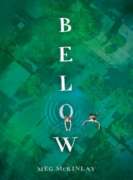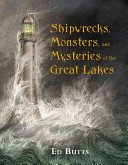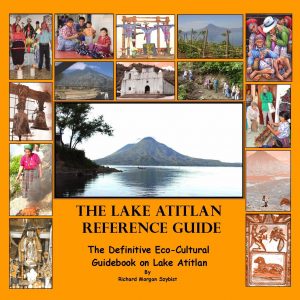Two children wake up to hear the lake singing, then the wind begins wailing or is it a wolf? They bundle up and venture out into the cold, carrying their skates. On the snow covered shore, they spot tracks made by fox, deer, hare, mink, otter and the wolf! In the bay, the ice is thick and smooth. They lace up their skates, step onto the ice, stroking and gliding, and the great lake sings again.
Lakes
The Legend Of El Dorado
Below

On the day Cassie was born, they drowned her town. The mayor flipped a lever and everyone cheered as Old Lower Grange was submerged beneath five thousand swimming pools’ worth of water. Now, twelve years later, Cassie feels drawn to the manmade lake and the mysteries it hides — and she’s not the only one. Her classmate Liam, who wears oversized swim trunks to cover the scars on his legs, joins Cassie in her daily swims across the off-limits side of the lake. As the summer heats up, the water drops lower and lower, offering them glimpses of the ghostly town and uncovering secrets one prominent town figure seems anxious to keep submerged. But like a swimmer who ventures too far from shore, Cassie realizes she can’t turn back. Can she bring their suspicions to light before it’s too late — and does she dare?
Shipwrecks, Monsters, and Mysteries of the Great Lakes

In 1679, a French ship called the Griffon left Green Bay on Lake Michigan, bound for Niagara with a cargo of furs. Neither the Griffon or the five-man crew was ever seen again. Though the Griffon’s fate remains a mystery, its disappearance was probably the result of the first shipwreck on a Great Lake. Since then, more than six thousand vessels, large and small, have met tragic ends on the Great Lakes. For many years, saltwater mariners scoffed at the freshwater sailors of the Great Lakes, “puddles” compared to the vast oceans. But those who actually worked on the Great Lakes ships knew differently. Shoals and reefs, uncharted rocks, and sandbars could snare a ship or rip open a hull. Unpredictable winds could capsize a vessel at any moment. A ship caught in a storm had much less room to maneuver than did one at sea. The wreckage of ships and the bones of the people who sail them litter the bottoms of the five lakes: Ontario, Erie, Huron, Michigan, and Superior. Ed Butts has gathered stories and lake lore in this fascinating, frightening volume. For anyone living on the shores of the Great Lakes, these tales will inspire a new interest and respect for their storied past.
Nanabosho and the Cranberries
The Lake Atitlan Reference Guide
 The Lake Atitlan Reference Guide is an eco-cultural guide to the lake identified by Aldous Huxley (Brave New World) as “the most beautiful lake in the world.” Atitlan is a volcanic caldera, located at 5,000 ft above sea level in the Mayan highlands of Guatemala. Atitlan means “at the water.” It is a fusion of simple Nahuatl words that belies the complexity of the entity it identifies. Lake Atitlan is both a place and an event in motion. Its life incorporates the visually stunning character of one of nature’s most ambitious creations and the extraordinarily diverse cultural character of the human life that the Lake has drawn to its shores. Atitlan was born violently, long ago, probably before the emergence of man here. Scientists still debate the exact nature of its birth, an event which created a nearly circular depression of 11 miles in diameter, 95 square miles of area, and over 1,000 feet deep. The cause of this huge cavity, a chain of events which began with an immense eruption, produced a unique microenvironment that has been drawing wanderers to the Lake’s shores for at least thousands of years. Cultures have clashed to control it. Vagabonds have been absorbed by it, laid down roots, and quit “moving on.” Traveling notables have been overwhelmed by its beauty and written about it in the loftiest of terms. Any effort to empirically order the kaleidoscope of its elements is ultimately challenged by the spiritual and physical immensity of the subject. This work makes no such attempt. What is offered here instead is a summary of the Lake environment in terms of its physical location and nature, its cultural history, and its contemporary political and socioeconomic life. The text is supported by more than 100 quality fotos (most in color) and a variety of other illustrations.
The Lake Atitlan Reference Guide is an eco-cultural guide to the lake identified by Aldous Huxley (Brave New World) as “the most beautiful lake in the world.” Atitlan is a volcanic caldera, located at 5,000 ft above sea level in the Mayan highlands of Guatemala. Atitlan means “at the water.” It is a fusion of simple Nahuatl words that belies the complexity of the entity it identifies. Lake Atitlan is both a place and an event in motion. Its life incorporates the visually stunning character of one of nature’s most ambitious creations and the extraordinarily diverse cultural character of the human life that the Lake has drawn to its shores. Atitlan was born violently, long ago, probably before the emergence of man here. Scientists still debate the exact nature of its birth, an event which created a nearly circular depression of 11 miles in diameter, 95 square miles of area, and over 1,000 feet deep. The cause of this huge cavity, a chain of events which began with an immense eruption, produced a unique microenvironment that has been drawing wanderers to the Lake’s shores for at least thousands of years. Cultures have clashed to control it. Vagabonds have been absorbed by it, laid down roots, and quit “moving on.” Traveling notables have been overwhelmed by its beauty and written about it in the loftiest of terms. Any effort to empirically order the kaleidoscope of its elements is ultimately challenged by the spiritual and physical immensity of the subject. This work makes no such attempt. What is offered here instead is a summary of the Lake environment in terms of its physical location and nature, its cultural history, and its contemporary political and socioeconomic life. The text is supported by more than 100 quality fotos (most in color) and a variety of other illustrations.


